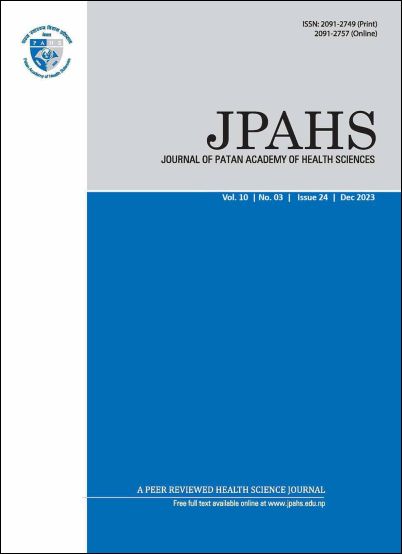Non-communicable disease competencies in undergraduate medical (MBBS) curriculum of Patan Academy of Health Sciences, Nepal
DOI:
https://doi.org/10.3126/jpahs.v10i3.62534Keywords:
competency mapping, medical curriculum, non-communicable disease, undergraduate medical studentAbstract
In the absence of equitable and well-established health care delivery system, the populations of lower middle income countries are more vulnerable to the impact of the non-communicable diseases (NCDs). However, adequate focus on teaching the NCD related competencies in the curriculum of medical professionals is missing in many of these countries.
The South-East Asia Regional (SEAR) NCD Network took an initiative to evaluate the NCD competencies in the pre -service curriculum of the health care providers. As part of this initiative Patan Academy of Health Sciences (PAHS), School of Medicine (SOM) conducted a competency matching exercise for the NCD related competencies in its undergraduate medical (MBBS) curriculum using the tools and format developed by SEAR NCD Network Partners. It was found that 46 out of 55 listed competencies were either fully or partially covered while 10 of the competencies were not addressed in the PAHS MBBS curriculum. Following this exercise, the working group at PAHS School of Medicine has come up with an action plan, has identified a few NCD related competencies to be certified along with the tools and timing of certification
Competency in NCD management ensures that future physicians have the necessary skills and knowledge to provide appropriate treatment and care for patients with NCDs through early detection and effective patient education which can reduce the burden of NCDs and the costs associated.
Downloads
Downloads
Published
How to Cite
Issue
Section
License
© Journal of Patan Academy of Health Sciences
Submission of the manuscript means that the authors agree to assign exclusive copyright to JPAHS. All authors must sign a Copyright Transfer and Author Agreement form upon submission of the manuscript to the Journal. The work shall not be published elsewhere in any language without the written consent of JPAHS. The articles published in this journal are protected by copyright which covers translation rights and the exclusive rights to reproduce and distribute all of the articles printed in the journal.




